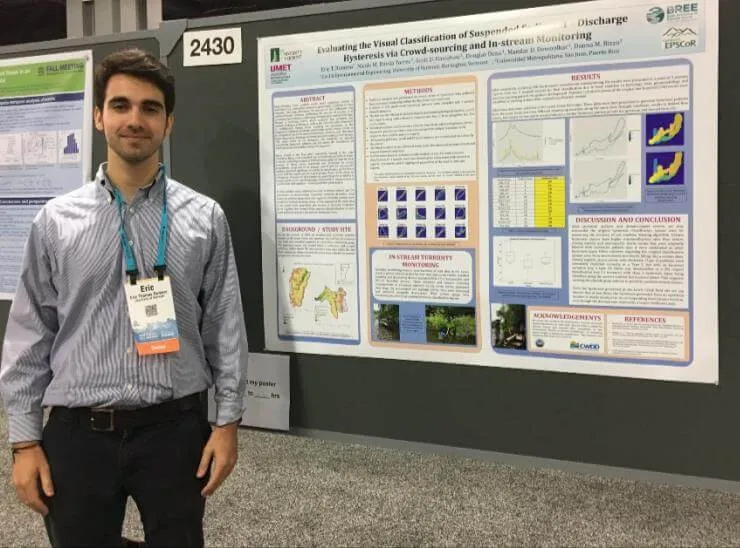Eric Romero, 2019 graduate of Environmental Engineering, is working at NASA on research that involves using satellite data and machine learning to estimate terrestrial contributions to the carbon cycle. Eric gives a lot of credit to the opportunities he got while at UVM CEE. His interest in Earth Observation Science began in the first semester of his sophomore year while taking Geomatics from Scott Hamshaw. Eric found it fascinating that we could uncover so much information about a study site with a bird’s eye-view. The scope of the course was limited to a civil or environmental engineer’s perspective, but it made him think about the possibilities. When Scott mentioned that we could minor in geospatial technologies through our college, he jumped at the opportunity.
During his junior year, Eric became interested in undergraduate research, so he reached out to his academic advisor, Donna Rizzo, with his interests in applying remote sensing and geospatial technology. The first thing she asked him was if he knew Hamshaw, who was involved in research regarding storm event sediment dynamics in the Lake Champlain basin and smaller watersheds throughout Vermont. That research sought to utilize both machine learning and remote sensing techniques using unmanned aircraft systems (UAS), LiDAR and in-stream turbidity monitors to determine streambank erosion and nutrient loading to Lake Champlain. Eric got to working with Scott and applied and was accepted for a summer intern position with CEE professors Hamshaw, Mandar Dewoolkar, Donna Rizzo and Kristen Underwood through the NSF Vermont EPSCoR program. Through this research Eric gained field experience working with UAS, GIS programs, machine learning techniques and exploratory data analysis using programming languages like R-Studio and Matlab. Eric also traveled to Washington, D.C. to present the research at the international American Geophysical Union (AGU) Fall Meeting.
Toward the end of his senior year Eric was still involved in research projects. He applied for an internship in the Earth Science Division at NASA Goddard Space Flight Center, under the mentorship of Dr. Compton “Jim” Tucker. During that internship Eric applied everything he learned from his UVM research: machine learning, data analytics, programming and GIS. The internship was successful and Dr. Tucker invited Eric to stay on the project full-time after the summer.
Because of such successful research experiences of our students the department continues to engage 20 or so undergraduate students in research with faculty each semester.
